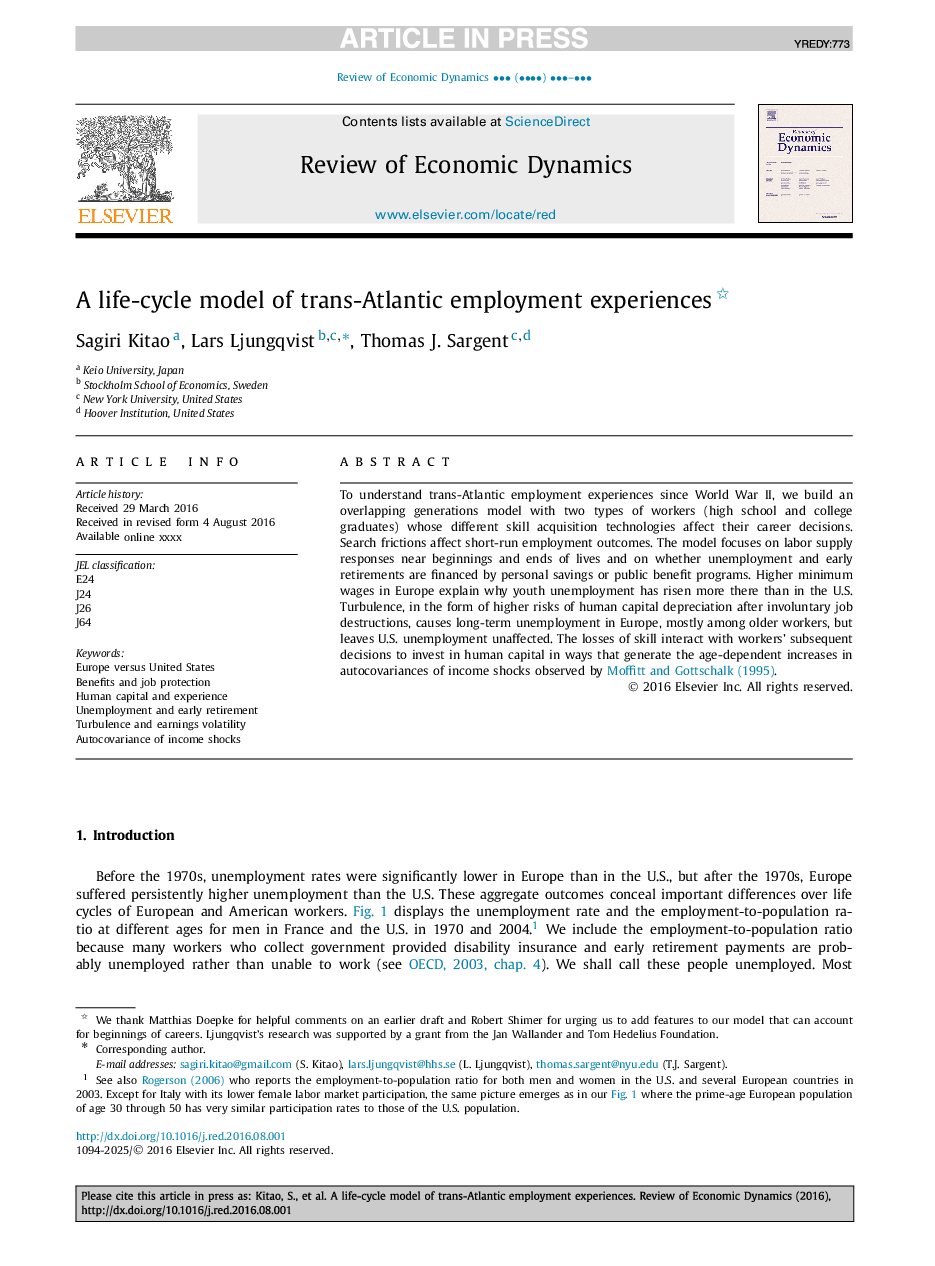| Article ID | Journal | Published Year | Pages | File Type |
|---|---|---|---|---|
| 5104347 | Review of Economic Dynamics | 2017 | 30 Pages |
Abstract
To understand trans-Atlantic employment experiences since World War II, we build an overlapping generations model with two types of workers (high school and college graduates) whose different skill acquisition technologies affect their career decisions. Search frictions affect short-run employment outcomes. The model focuses on labor supply responses near beginnings and ends of lives and on whether unemployment and early retirements are financed by personal savings or public benefit programs. Higher minimum wages in Europe explain why youth unemployment has risen more there than in the U.S. Turbulence, in the form of higher risks of human capital depreciation after involuntary job destructions, causes long-term unemployment in Europe, mostly among older workers, but leaves U.S. unemployment unaffected. The losses of skill interact with workers' subsequent decisions to invest in human capital in ways that generate the age-dependent increases in autocovariances of income shocks observed by Moffitt and Gottschalk (1995).
Related Topics
Social Sciences and Humanities
Economics, Econometrics and Finance
Economics and Econometrics
Authors
Sagiri Kitao, Lars Ljungqvist, Thomas J. Sargent,
